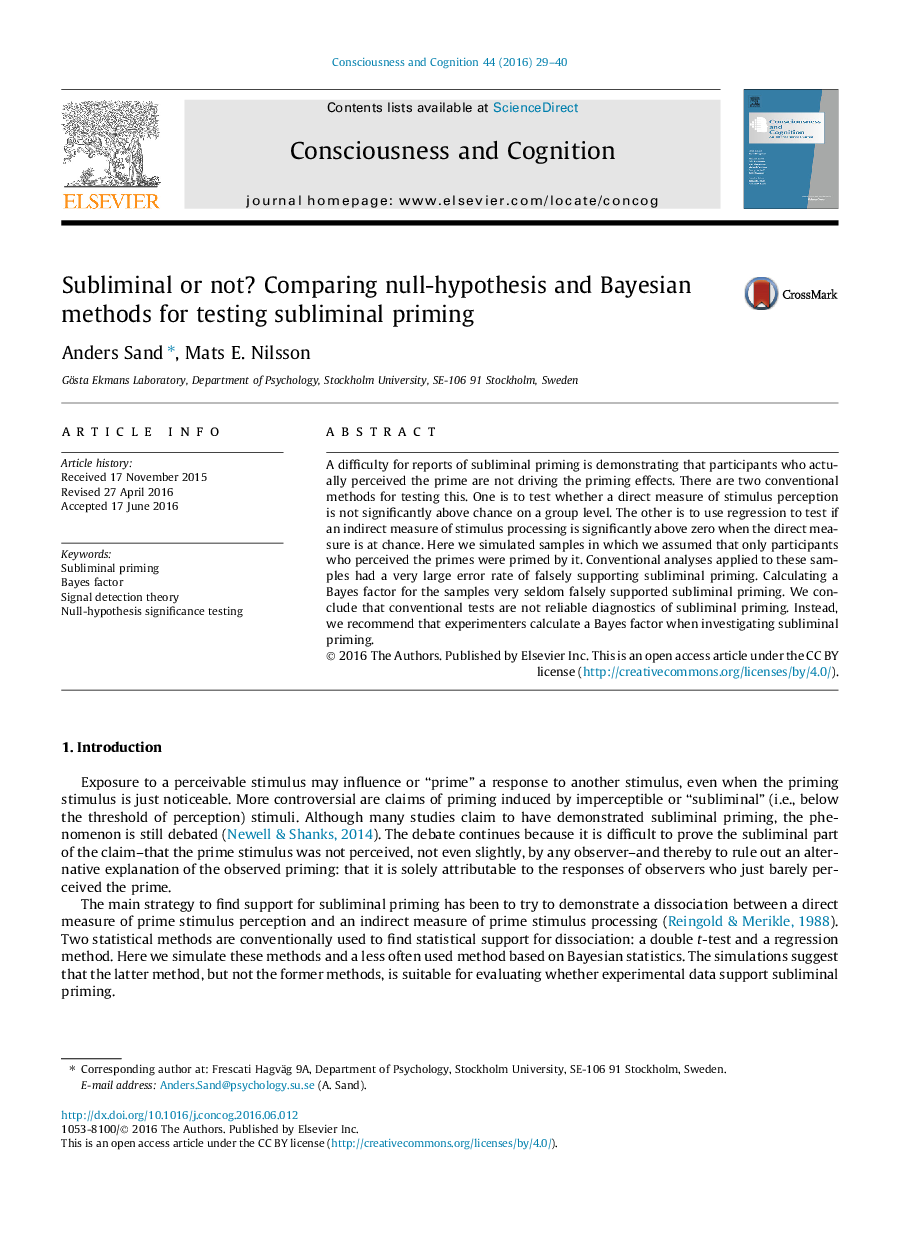| Article ID | Journal | Published Year | Pages | File Type |
|---|---|---|---|---|
| 7288306 | Consciousness and Cognition | 2016 | 12 Pages |
Abstract
A difficulty for reports of subliminal priming is demonstrating that participants who actually perceived the prime are not driving the priming effects. There are two conventional methods for testing this. One is to test whether a direct measure of stimulus perception is not significantly above chance on a group level. The other is to use regression to test if an indirect measure of stimulus processing is significantly above zero when the direct measure is at chance. Here we simulated samples in which we assumed that only participants who perceived the primes were primed by it. Conventional analyses applied to these samples had a very large error rate of falsely supporting subliminal priming. Calculating a Bayes factor for the samples very seldom falsely supported subliminal priming. We conclude that conventional tests are not reliable diagnostics of subliminal priming. Instead, we recommend that experimenters calculate a Bayes factor when investigating subliminal priming.
Related Topics
Life Sciences
Neuroscience
Cognitive Neuroscience
Authors
Anders Sand, Mats E. Nilsson,
